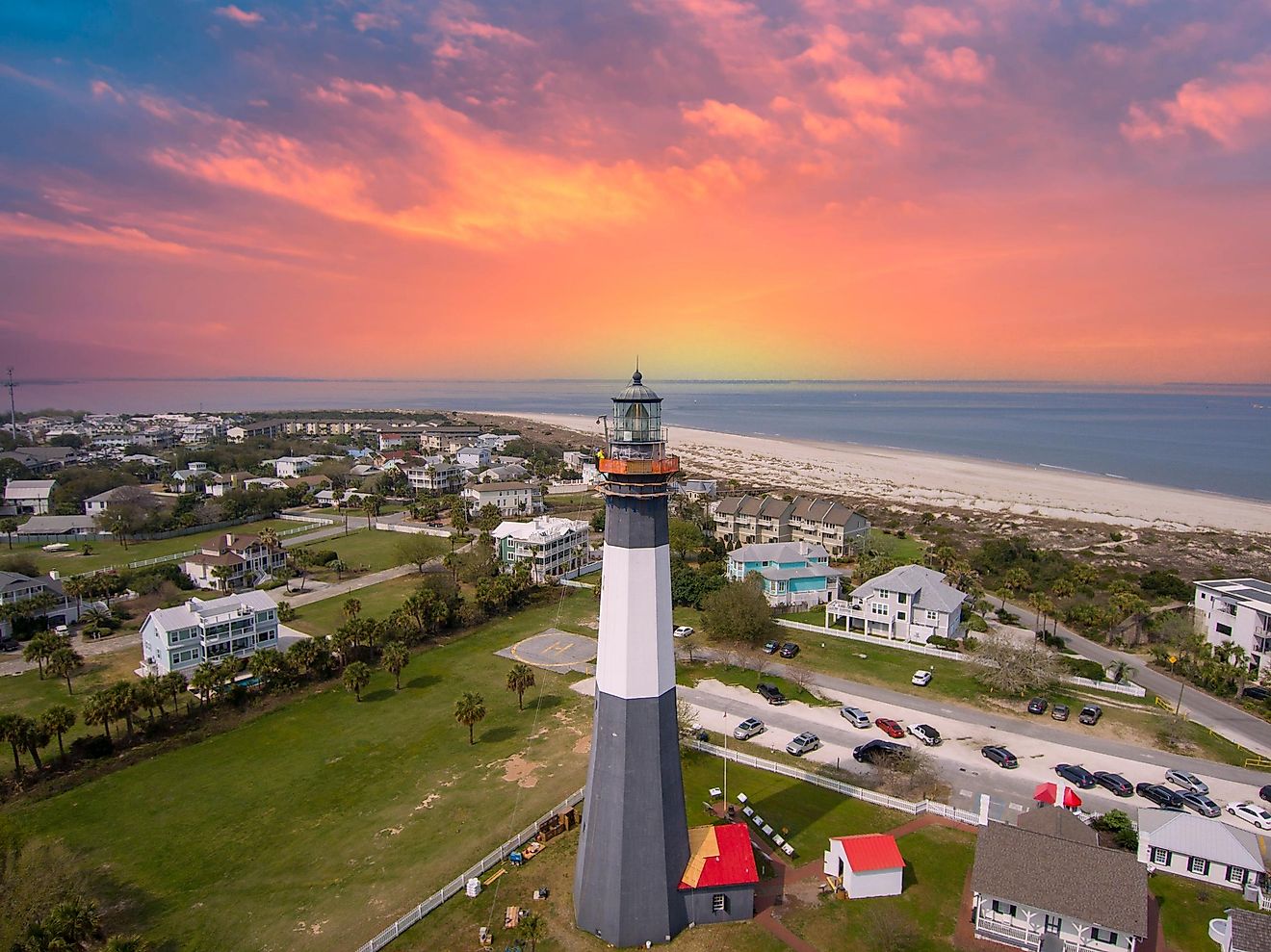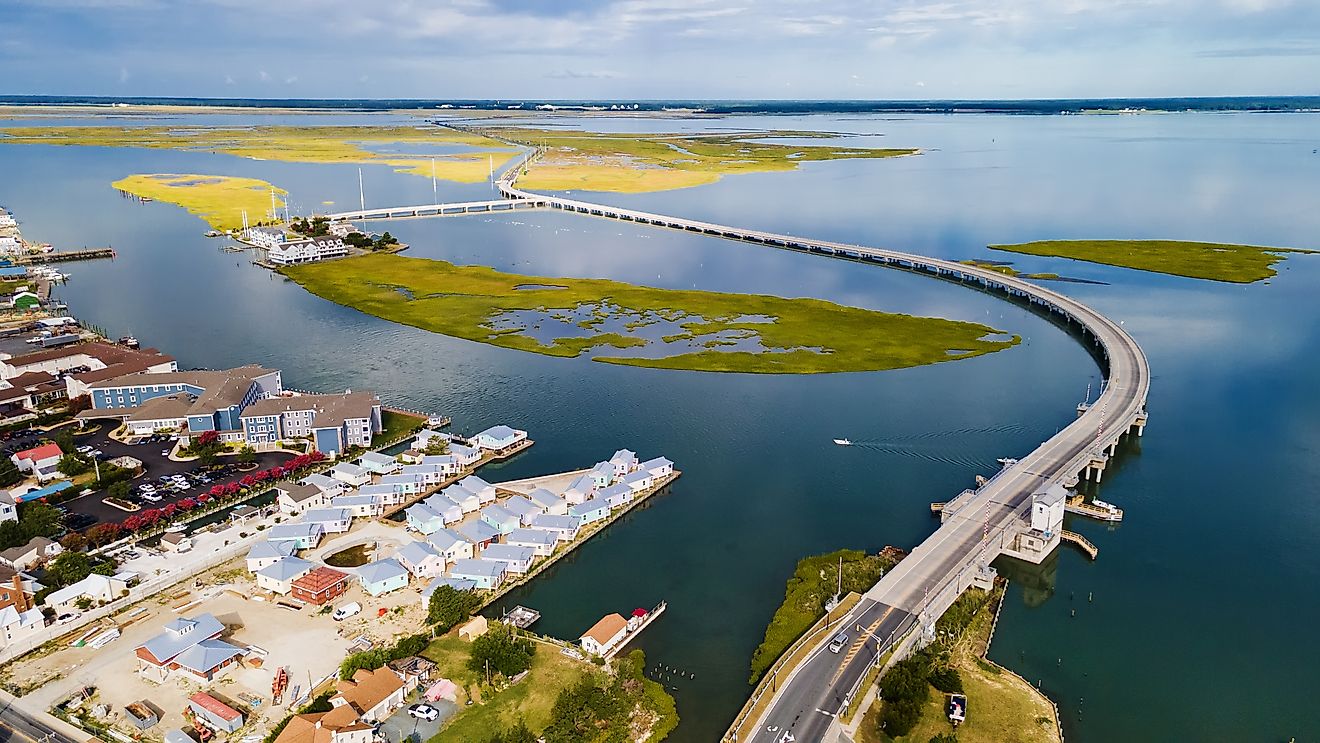
Allentown, Pennsylvania
Allentown is a large city in the Lehigh Valley region of the US State of Pennsylvania. As the state's third-largest city, it has played a prominent role in Pennsylvania's heritage ever since the American Revolution. The city's contribution to America's national railroad network in the 19th century has solidified it as a rugged and industrial center, a title that it still holds today with its strong economy, arts, and culture.
Geography Of Allentown

Allentown, which one might think is a small town because of its name, is actually a large city in the Lehigh Valley region in the east of Pennsylvania. The city encompasses a total area of 46.6 sq. km, of which about 46.1 sq. km is covered by land, and 0.5 sq. km is covered by water. Allentown is situated beside the Lehigh River and smaller bodies of water such as the Jordan Creek and the Little Lehigh Creek that empty into it. The city is only 24km west of the New Jersey state line. Major cities that are near Allentown include Philadelphia to the south, New York City to the east, and Harrisburg to the west. Interstate 78 (I-78) also runs through Allentown. Lehigh Valley, the area in which the city is located, is a geographic region that is surrounded by the Blue Mountains, the Appalachian Mountains, and South Mountain.
Climate Of Allentown
Allentown has a humid continental climate, with warm and pleasant summers, mild springs and falls, and cold winters. The average temperature in a year in Allentown is 11.05 °C, with hot months such as July having an average temperature of 23.7 °C and cold months such as January having an average temperature of -2.0 °C. Allentown is humid and sees evenly distributed precipitation throughout the year, with an average annual precipitation of 46.6 inches. Throughout the year, Allentown receives around 2859 hours of sunlight. July has the most hours of daylight with 10.9 hours on average per day, while January has the least with 5.4 hours on average.
Brief History Of Allentown

In 1762, Chief Justice of Colonial Pennsylvania's Supreme Court William Allen founded Allentown under the name "Northampton Town." William Allen, who also served as a former Mayor of Philadelphia and a prominent businessman, drew up designs for the rural community, hoping to turn the town into a commercial hub for travelers along the Lehigh River. However, the Lehigh River was rarely used, and by the time of the American Revolution, Allentown remained a small village inhabited by farmers and tradesmen. In 1838, the city officially adopted the name Allentown. The Liberty Bell was hidden in Allentown during the American Revolution, fearing that British troops might steal it and melt it down into a cannon. America's Industrial Revolution saw the rise of strong local iron industry in the town. All of the iron Allentown could manufacture was used in the nation's expanding railroad network. A massive inflow of German and Irish workers established Allentown as a mini-Pittsburgh along the Lehigh River. However, when the railroad industry collapsed in the Panic of 1873, all of the city's prosperity went away. The city had largely since recovered from the economic calamities of the 19th century. From the 20th century onwards, the silk mills had replaced the declining iron sector, and at present, the city currently contains many industries.
The Population And Economy Of Allentown

According to the 2020 US Census, Allentown had a population of 125,845 people, a significant increase compared to the population in 2010 (118,032). In Pennsylvania, it is the fastest-growing major city, and its population makes it the state's 3rd largest city, behind Pittsburgh and Philadelphia. 51.6% of Allentown residents are female, while the rest are male. The key ethnic demographics are 31.0% White, 13.8% Black or African Americans, 3.0% Asians, and 54.3% Hispanic. The median household income of Allentown residents is $43,816, while the percentage of people that fall below the federal poverty line is 25.6%. The city is still growing, with recent projects such as the full development of its downtown, earning it the title of "national success story" from the Urban Land Institute - one of only six communities to receive this honor.
The railroad industry was the most significant part of Allentown's economy during the 19th century. Like much of Pennsylvania, the city's economy has mainly consisted of the service industry and the manufacturing industry. The healthcare, transportation, and warehousing industries have also seen tremendous expansion. The Allentown Economic Development Corporation (AEDC) runs Bridgeworks, a business incubator that assists emerging commercial and manufacturing enterprises get started and growing their business. In addition, the Pennsylvania State Legislature established the Neighborhood Improvement Zone (NIZ) in 2009 to stimulate growth and rehabilitation in Allentown by developing a new Central Business District in downtown Allentown.
Attractions In Allentown

There are many different attractions at Allentown that display its culture. For the arts, groups such as The Allentown Symphony Orchestra perform in Miller Symphony Hall, located on North Sixth Street in the city's heart. The Allentown Band, the country's oldest civilian concert band, was founded in the city. Allentown continues to have a long musical history of civilian concert bands. The Drum Corps International Eastern Classic, which takes place every two years at J. Birney Crum Stadium, brings together the best junior drum and bugle corps from across the world for a two-day musical festival. The Allentown Art Museum, which is located in the city's heart, houses a collection of over 13,000 works of art as well as a library. Allentown's Pennsylvanian-German roots can still be found in its cuisine, with numerous German foods available in local restaurants, fairs, and markets like the Allentown Farmers Market.
Allentown is a proud city of Pennsylvania, with a rich heritage in the state's once-successful railroad industry, a strong culture, and many attractions that are unlike any other in America.











